
Happy Wine Wednesday!
Today, we’re exploring the world of rieslings in Germany’s beautiful Mosel Valley and chatting with Paso Robles winemaker, Janie Willheim.
So pour yourself a glass and let’s get our wine nerd on!

Mosel Valley
Steep Icy Hills of Riesling
We’re venturing towards the very west of Germany to the Mosel Valley this week! This wine region follows the Mosel River (or Moselle, if you’re in France), which flows through north-eastern France and Luxembourg then cuts through Germany to the northeast where it empties into the Rhine near a town called Koblenz.
It's stunning — filled with rolling hills and castles nestled along the river as far as the eye can see. Please take a moment to Google “Mosel Valley vineyards” to truly appreciate the beauty of this area before reading on.
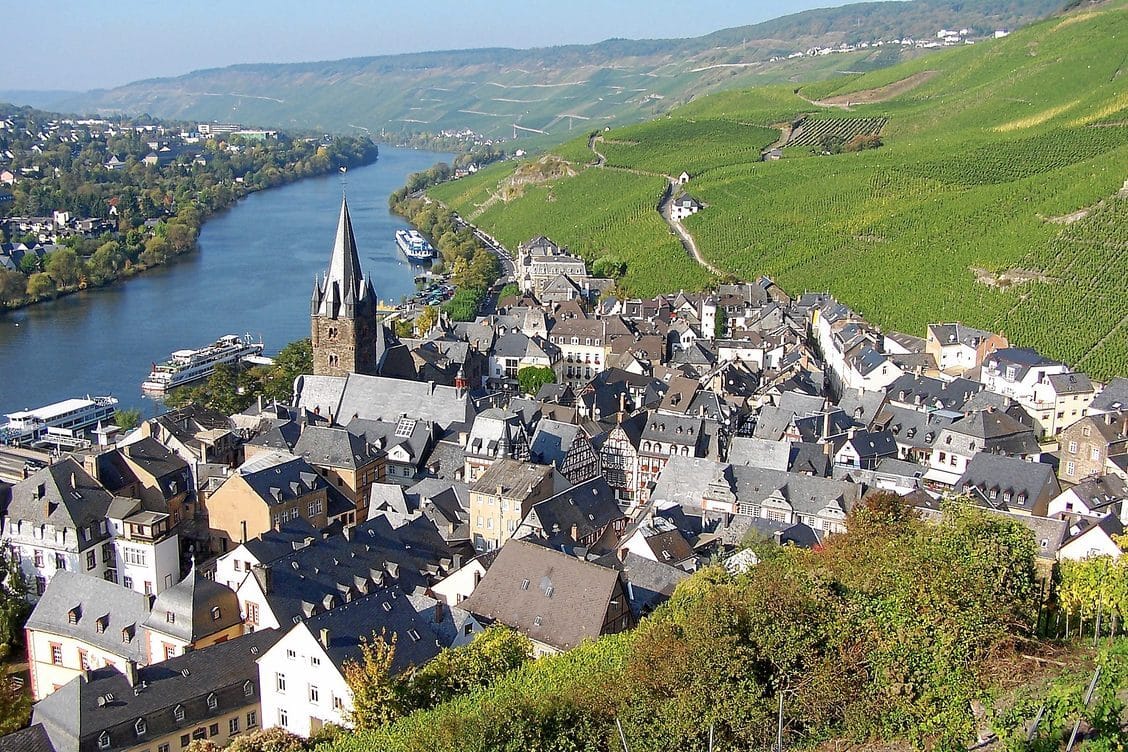
Photo by Berthold Werner of the town Bernkastel-Kues in middle Mosel
And why should we care about the Mosel Valley?
Because of the fantastic rieslings that come out of this area! In fact, The Wine Bible’s Karen MacNeil described these rieslings “like glittering sunlight on a subzero day.” That is one hell of a description and if that doesn’t make you crave some riesling, I don’t know what will.
Let’s start with the varietal itself, because I feel like this white wine often gets misconstrued as being too sweet. I always thought that rieslings were basically sweet like moscatos, and avoided them like the plague. It wasn’t until I unknowingly had a beautiful, crisp, refreshing glass of riesling from Alsace (in eastern France, bordering Germany) that I thankfully gave this white varietal a second chance.
Anyway. Riesling can be very sweet, but it can also be bone-dry. Known for being aromatic, some common tasting notes that you’ll get for rieslings are lime, green apple, beeswax, and…petroleum. Yes, like what you smell when you fill up your car. Please don’t let that turn you off because somehow, in a riesling, it works!
Side note: The off-dry (aka sweet) rieslings are perfect for pairing with spicy foods, especially Indian and Asian cuisine.
Rieslings can be found around the world – the Czech Republic, Ukraine, Moldova, Australia, New Zealand, and Washington, California, and New York here in the United States. Germany, though, is the most important producer of this white varietal. If you, like me, prefer the dry kind of riesling, check out producers from Alsace, France and South Australia (like Eden Valley, Clare Valley, and Adelaide Hills).
Now back to the Mosel Valley.
Here’s the thing. The rieslings here are sweet. But, even for those who prefer dry wines, the high acidity and minerality balances the sweetness to create a wine that’s perfectly balanced and just lovely. I’m going to let Karen MacNeil take this one again: “They almost prance with energy.”
So what makes the rieslings from this area the top of their class?
One of the reasons is the steep vineyards in Mosel. They are not only the steepest in Germany, but among the steepest in the world! The steepest vineyard is Calmont, which has been planted with grapes for more than 1,500 years and has 60-70 degree inclines. For context, the steepest ski run in the United States is at the Crested Butte Ski Resort and is 55 degrees. Here are photos from producer Weingut Franzen in Calmont so you can really appreciate it.
Now picture the typical vineyard worker, usually a woman of about sixty, climbing up and down these icy vineyards because these hills are too steep for machines. Absolutely treacherous and exhausting!
Another is, again, the iciness. These are among some of the most northern vineyards in Germany and, combined with the steepness, means that there is a very limited number of sunlight hours each day. In fact, the entire region (regardless of elevation) only gets about a third of the sunlight hours that Provence, France does. This means that all of the vineyards are southern facing to maximize the precious amount of sunlight they receive. Some of the best vineyards are found near the river itself, because that little bit of reflection off the water can contribute to the sunlight necessary for ripe grapes.
Last but not least, the slate. The blue-gray and burnt orange-red slate here retains heat and is very porous, which helps prevent mass erosion when there are torrential downpours. As we know, the vines are going to cling onto every piece of sunlight and heat they can get, so the slate is crucial here. Some of the most well-known vineyards actually seem to have no soil at all, relying entirely on pieces of broken slate! The slate is so important that if it ever washes down the slopes in the rain, they’re immediately carried back up the hill. Again: exhausting.
Now…many claim that this slate contributes to the flavor of wine from this region. While this is a truly romantic notion, I’m here to remind you once again that the soil (or slate) of a region cannot and does not impact the flavor of the wine. It’s not that you can’t or won’t taste something minerally in wine – it’s just not coming from the soil itself. Here’s a refresher on terroir and what we’re actually tasting.
If you really want to dig deep (or climb up, as it were) into Mosel, check out the three Sonnenuhr (“sundial”) vineyards located in Mittelmosel (middle Mosel). Many of the top producers of the area are clustered in this area, and the three vineyards with “sundial” in their name have huge sundials in the sunniest part of their slopes that were built back in the early 1600s: Wehlener Sonnenuhr, Brauneberger Juffer-Sonnenuhr, and Zeltinger Sonnenuhr. These sundials were built into the sunniest part of the slope so vineyard workers could easily see when it was lunch time.
Similar to Burgundy, each of these vineyards have many owners who own tiny plots. For example, there are about 200 wine estates that own parts of Wehlener Sonnenuhr. Even if you don’t know the specific producer/wine estate, the label will have the vineyard name so you can look for the word “Sonnenuhr” on the bottle and you should be good to go. Or, you know, ask the associate at the wine store to point you in the right direction!
Fortunately, there are plenty of delicious rieslings (both dry and off-dry) that you can try in the $25 - $35 range (and plenty that are much more expensive.) If you want to try some of the most well-known producers from Mosel, check out Selbach-Oster, Dr. Loosen, Karp-Schreiber, Reuscher-Haart, and Willi Schaefer.

Janie Willheim
Paso Robles Winemaker
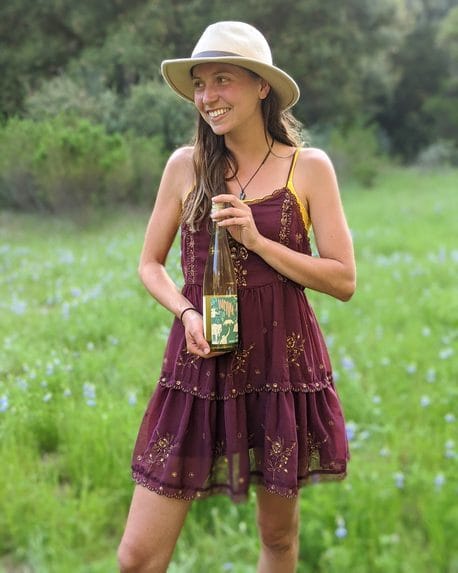
This interview has been edited for clarity.
Merobebe
If you could visit any wine region in the world, where would you go?
Janie Willheim
I'd love to visit Mosel Valley. Visiting the riesling Mecca of the world would be pretty incredible – to see their vineyards planted next to breathtaking rivers and castles.
Merobebe
What's your favorite non-wine drink?
Janie Willheim
My favorite non-wine drink is for sure a Naked & Famous cocktail. I love a good mezcal drink!
Merobebe
If you could only bring one (bottomless) bottle of wine to a deserted island, what would it be?
Janie Willheim
If I could bring one bottomless bottle of wine to a deserted island, I'd bring a Grand Cru Champagne or Trimbach Riesling... that's two different wines but it's too difficult for me to choose!
Merobebe
What first interested you in wine, and what was the catalyst in finally making the switch from working in hospitality to making your own wine?
Janie Willheim
As a teenager, I was intrigued by the amount of varied creative paths that you can choose in the world of wine, leading me to choose Wine & Viticulture as my major at Cal Poly SLO even though I had no idea what I was going to do with that degree.
After a couple years of schooling, I still was not totally sold on going into the wine industry as a career, and more just enjoyed the idea of learning about it.
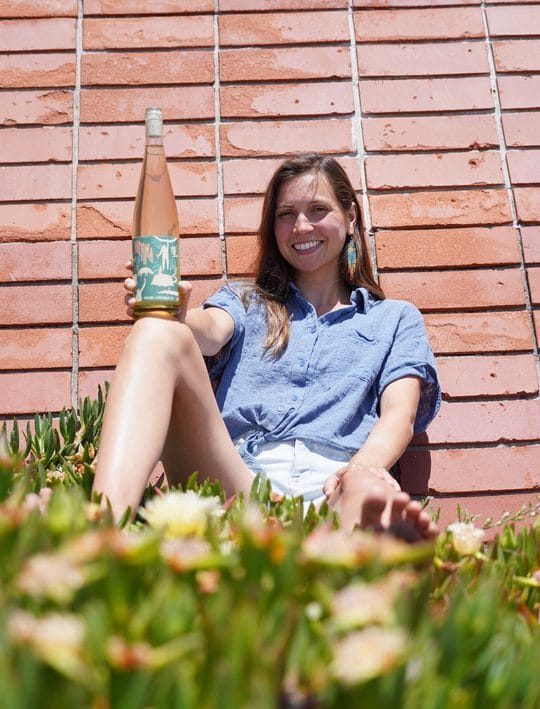
Then I worked my first harvest in 2014 and got my hands dirty, and did all the vineyard sampling, and played with juice fermentations, and discovered how much I enjoyed manual labor and the processes of winemaking.
I have worked a couple different hospitality and restaurant jobs to dip my toes in different sides of the industry and to have the opportunity to get in touch with more of the international wine scenes outside our CA wine bubble. At this point, I have no intentions of wanting to have my own winery because I love having my own small wine label on the side to fulfill my creative desires.
Merobebe
What excites you the most about the wine you’re making?
Janie Willheim
The basis was my excitement to create rieslings that change the California narrative that riesling only makes sweet wine – how wrong that is! I was up to the challenge of opening up people's minds and palates to the concept that rieslings can also be made in a dry, complexly beautiful style, like in Alsace or Germany where there's a wide spectrum of rieslings being produced.
I worked an eight month stint at a three Michelin star restaurant called Manresa in the Bay Area where one of the master sommeliers introduced me to world class wines, including famous riesling producers, that blew my mind! That's when I got the idea stuck in my head. If I were to ever make my own wines one day, I absolutely had to make rieslings.
I knew I needed to differentiate myself in the California market where there's now close to 4,400 wineries. I enjoy working with unique varieties like Valdiguie and Counoise which - when grown right and treated with enough love - make delicious wines and can help promote biodiversity in the fields. I also enjoy learning about grapes' intriguing backstories and histories in other countries, and how they found themselves in California.
Merobebe
Winemaking is such a complex and involved process. What are some of your favorite parts of winemaking?
Janie Willheim
By far my favorite part of the process is sherpaing along juice fermentations into wines by checking up on them everyday and giving the liquids daily movement in ways like punch downs or stirring. The wonderful, fruity smells and tastes of the fermentations blow me away by the time harvest rolls around each year and is something I always look forward to. It makes the long hours at the sorting table, aching muscles from the cellar work, and the expensive costs of winemaking all so, so, so rewarding.
As well as seeing people enjoy the wines you make! That's a pretty great feeling too.
Merobebe
In your experience, do you think there are any biases or stereotypes that influence the way customers perceive or interact with female winemakers/sommeliers compared to men?
Janie Willheim
I can only speak on behalf of my own lived experiences, but I feel lucky to have entered the industry at a time when there have already been a lot of other women that did a hell of a lot of leg work to open the door for more female winemakers/cellar workers to be taken seriously. I'm happy to say that I've received amazing support from most of the winemakers and vineyard managers that I've worked with.
The glaring lack of diversity that exists in the world of wine is the real issue at hand. It’s time to make wine more accessible for all different types of people and not just the white, wealthy elite. Nancy Gonzales who makes Ulloa Cellars in Paso [Robles] started her wine label the same time as me in 2019, and was shockingly the first self-identified Latina winemaker in our region. The way I've seen our community elevate Nancy and her amazing wines speaks highly of her hard work, and I hope to see a lot more of this for others.

Merobebe
What makes Paso Robles such a great location to make wine?
Janie Willheim
Paso was the place I wanted to settle into because of the genuine feeling of community over competition that exists. Everyone loves to recommend each other's wineries because there's so much love and appreciation for each others' craft.
I'm especially grateful for the family of winemakers that I've found myself in. I work full-time at Desparada Wines under Vailia From (the owner/winemaker) who is married to Russell From (owner/winemaker of Herman Story.) The two of them have inadvertently created an incubation space for their employees to create their own wines, which allowed me the opportunity to start making wine at Desparada where they're still made. Since I didn't have millions of dollars to start with, this setup allows me to make small batches of wines in a way that feels fun and exciting without the intense burden of being forever indebted to loans.
Merobebe
Anything else you’d like to add before we wrap up?
Janie Willheim
I've learned that there's a good amount of wine drinkers that, like me, care about the negative impact of the wine industry on our environment. It’s caused me to only work with vineyards that care about regenerative farming.
For the sake of the wine industry and humanity itself, it's time for all business owners to step up if they haven't already and do whatever they can to find sustainable solutions. It will allow people to be able to continue producing and drinking wine without using large amounts of water in the cellar & vineyard, or using harsh pesticides/fungicides/insecticides that are killing our bee & other insect populations, and the awful effects of mono farming on our soils and ecosystems. The more biodiversity, the better!
Merobebe
Where can people learn more about your wines?
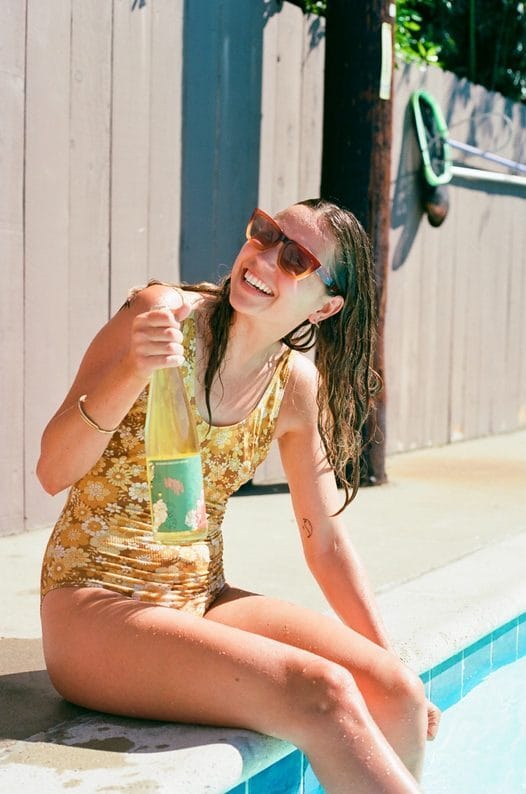
Janie Willheim
Feel free to follow me on Instagram at @janiewillheimwines – where I don't post often – or just come visit me at Desparada winery in Tin City [in Paso Robles] where I work full time! I sell my wines there and through my distributor Amy Atwood Selections who places them in different wine shops & restaurants around California.

Get a wine-related entertainment pairing for your weekend.
Today’s pairing is A Good Year, the 2006 romcom directed by Ridley Scott starring Russell Crowe and Marion Cotillard.
Loosely based on the 2004 novel of the same name by British author Peter Mayle, the story follows Max Skinner, a British banker who inherits his uncle’s vineyard in Provence where he spent many holidays as a child. As he works to prepare the estate for a quick sale, a Napa Valley oenophile shows up, claiming to be his uncle’s previously unknown illegitimate daughter and true heir to the Chateau and its vineyards.
Grab some popcorn and a bottle of red, and settle in for a sappy romcom with beautiful views (and I’m not just talking about a young Russell Crowe and Marion Cotillard!).
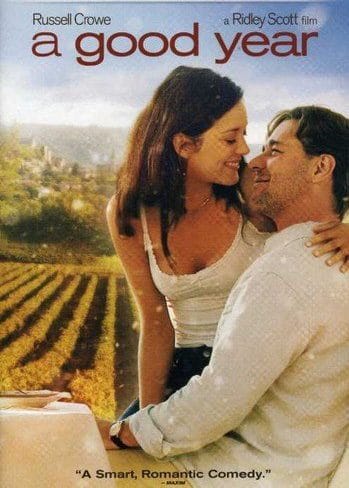
What’s on your wine mind?
Is there a specific wine varietal or region you want to learn more about? Want to show off at an upcoming wine tasting? I want to make sure Merobebe is helpful for you, so always feel free to reply to this email and let me know what wine questions you have.
Have a wine-derful week and see you next Wednesday!
Cheers,
Megumi
Have questions or feedback? Want to suggest a wine topic, woman in wine, or vinotainment pairing? Just reply to this email!




Copyright (C) " target="_blank">unsubscribe
